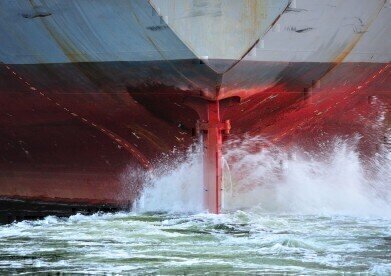Water/Wastewater
How to Stop Noise Pollution in the Ocean
Apr 02 2021
The noise generated from anthropogenic activities such as shipping, seismic surveys and offshore wind farms is having a sizable negative effect on countless marine species, according to a new study. Meanwhile, sounds of biological origin are decreasing in volume and frequency due to fishing, hunting and habitat displacement, while other naturally occurring noises are being disrupted by climate change.
While the study finds all of these phenomena can play havoc with the internal compasses of fish and other marine animals, it also suggests a variety of ways in which anthrophony (noises produced by human activity) can be curbed. These potential solutions include redesigning the propellers of vessels, changing their shipping routes, using lower-intensity seismic vibrations and employing acoustic bubble curtains in energy generation stations.
Sonar attack
When most people think of noise pollution, they’ll probably imagine the thunderous machinery employed at construction sites and demolition works, where low air quality and high decibels go hand in hand. However, sound travels much further underwater than it does in air, making noise pollution potentially far more damaging in the ocean than it is on land.
That’s especially true, given that many different types of marine animals (include the tiniest larvae to the largest whales) rely on sonar signals to find their way around, locate prey and identify a suitable mate. Noise generated by manmade means impinges upon their ability to do so, disrupting their life cycles and endangering their flourishment and even their very survival as species.
The sounds of shipping
One of the most pervasive types of underwater noise pollution is that generated by shipping – and in particular, the noise generated by the blades of a vessel’s propellers, which account for 85% of all shipping-related sounds. Ineffectually designed blades can lead to cavitation, which upsets the flow of water and causes fuel efficiency, wasted energy and plenty of unnecessary decibels.
To solve that problem, more efficiently designed propellers are available. Danish shipping tycoons Maersk have installed upgrades on 11 of its fleet, noting that acoustic output was reduced by 75%. However, the problem lies in the fact that Maersk spent over $100 million to retrofit their fleet. That kind of investment on an issue that doesn’t directly affect operations is not within the budget of all but the biggest shipping companies.
Other solutions
A more cost-effective fix to the issue would be to redesign shipping routes so that they avoid densely populated areas of the ocean. Meanwhile, the seismic surveys used to locate oil and gas reserves underwater are also huge sources of noise pollution. By using a technique called marine vibroseis, which uses more continuous and lower amplitude signals than traditional methods of surveying, could help to reduce the sounds generated during the detection of fossil fuel deposits.
Finally, offshore wind farms have a large role to play in the future of our energy portfolio, but they can also cause significant sonar disruption to life underwater. Thankfully, this can be fairly easily overcome via the introduction of acoustic bubble curtains, which put a barrier of bubbles between the farm and the external area, reducing acoustic energy output by as much as 95%. All of these methods will not definitively stop oceanic noise pollution, but they can certainly go some way towards mitigating its worst effects.
Events
May 05 2024 Seville, Spain
May 13 2024 Munich, Germany
May 23 2024 Beijing, China
May 23 2024 Beijing, China
Jun 10 2024 Algiers, Algeria













